
The Fox Oakland Theatre is a 2,800-seat concert hall, a former movie theater, located at 1807 Telegraph Avenue in Downtown Oakland. It originally opened in 1928, running films until 1970. Designed by Weeks and Day, the theatre is listed on the National Register of Historic Places. It was refurbished in the 2000s and reopened as a concert venue on February 5, 2009.

The Warner Theatre is an Art-Deco style movie palace located at 68-82 Main Street in Torrington, Connecticut. It opened on August 19, 1931 as part of the Warner Bros. chain of movie theaters. Today it operates as a mixed-use performing arts center. It is individually listed on the National Register of Historic Places and also a contributing property in the Downtown Torrington Historic District.
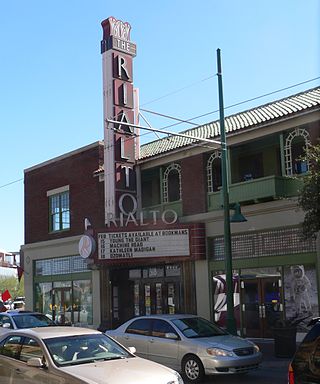
The Rialto Theatre is a performance theater and concert venue located on Congress Street in downtown Tucson, Pima County, southern Arizona. The cinema−theater and surrounding Rialto Building commercial block were listed on the National Register of Historic Places in 2003.

The Fox Theater is located at 2001 H Street in Downtown Bakersfield, California. The theater, which opened on Christmas Day, 1930, is a historic performing arts and community events center located in downtown Bakersfield, and hosts a variety of events, ranging from ballets, numerous community events, movies to contemporary pop and rock acts.
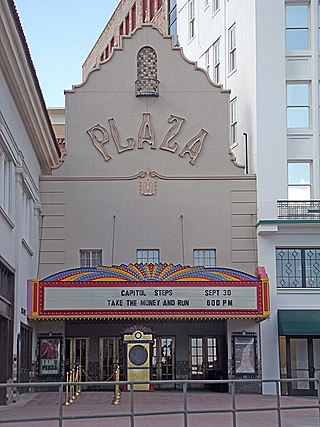
The Plaza Theatre is a historic building in El Paso, Texas built in 1930. The theater stands as one of the city's most well-known landmarks, and remains operational today. The theatre is a National Historic Building of Significance featuring the 2,050-seat Kendall Kidd Performance Hall, and the smaller 200-seat Philanthropy Theatre. It hosts Broadway productions, musical concerts, individual performers and the annual Plaza Classic Film Festival.

The Palace Theatre is a stage production venue at 76-96 Hanover Street in Manchester, New Hampshire, United States. Built in 1914, the theatre was listed on the National Register of Historic Places as the Athens Building.

Tucson High Magnet School, commonly referred to as THMS, THS, or Tucson High, is a public high school in Tucson, Arizona. It is part of the Tucson Unified School District with magnet programs in Technology, Visual Arts, and Performing Arts. The school is located adjacent to the University of Arizona and is close to the Downtown Arts District. It is the oldest high school in Arizona, having been established in 1892 and then re-established in 1906. The school celebrated its centennial in 2006. In terms of enrollment, THMS is the largest high school in southern Arizona and the sixth-largest in Arizona, with more than 3,500 students enrolled.
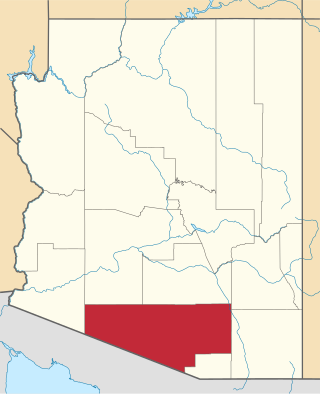
This is a list of the National Register of Historic Places listings in Pima County, Arizona.
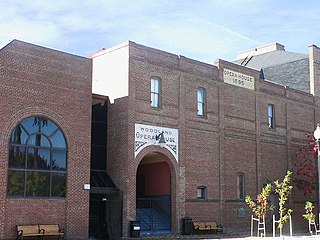
The Woodland Opera House, listed on the National Register of Historic Places and a California Historical Landmark, is one of four fully functioning 19th century opera houses in California. It is a contributing property to the Downtown Historic District of Woodland, California.
The Plaza Theater was the crowning jewel of 1920s development on West Congress Street in Tucson and the only indoor Spanish language theater in Southern Arizona. The theater was designed by renowned local Tucson architect Roy Place in 1930 for A. Kaufman a local commercial developer and pioneer merchant and leased to Los Angeles theater operator Joe Gross. Kaufman declared the night before opening that he;
"regarded the Plaza as Tucson's own theater, since all local employes [sic] had been hired for the construction of the building with equipment and contracting coming from Tucson sources whenever possible."

State Theatre of Ithaca is a historic, 1600-seat theatre located at Ithaca in Tompkins County, New York that hosts various events from bands, to plays, to comedy acts, to silent films, and more.

The Kahl Building is an historic building located in Downtown Davenport, Iowa, United States. It was listed on the National Register of Historic Places in 1983. In 2020 it was included as a contributing property in the Davenport Downtown Commercial Historic District. The building also includes the Capitol Theatre.

The Tower Theatre for the Performing Arts is a historic Streamline Moderne mixed-use theater in Fresno, California. Built in 1939, it opened to the public on December 15, 1939, under the management of Fox West Coast Theater Corporation. The building was designed by S. Charles Lee, with its tower inspired by the "Star Pylon" at the 1939 New York World's Fair. The theater underwent a renovation and reopened as a performing arts center in 1990, after being closed as a repertory cinema in 1989 due to financial troubles.

The Prescott Elks Theater and Performing Arts Center is a classically designed turn of the 20th century opera house seating over 500. Completed in 1905 and listed on the National Register of Historic Places as Elks Building and Theater, it was one of many "Elks' Opera Houses" across the country. Now over a hundred years later only one still exists.

The Holly Theatre is a historic Spanish Colonial Revival theater in Medford, Jackson County, Oregon, United States.
The Tucson Historic Preservation Foundation is a private, nonprofit organization dedicated to the preservation of the historic, architectural, as well as cultural heritage of Tucson, Arizona. Through advocacy initiatives, educational programs, architectural resources, and cultural events, the foundation’s goal is to encourage the community to learn about and preserve the historic buildings that make the Tucson and Pima County unique.
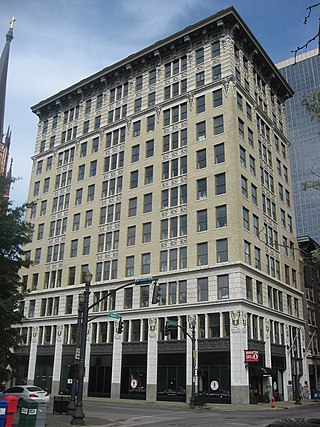
The Republic Building is a historic commercial building located in Louisville, Kentucky.The building is located at the northeast corner of Fifth Street and Muhammad Ali Boulevard, and neighbors the historic Starks Building. Prior to the renaming of several streets, Muhammad Ali Boulevard was known as Walnut Street. The mailing address is 429 West Muhammad Ali Boulevard. The building is one of the early Louisville office buildings to be designed by the prominent local architecture firm Joseph and Joseph, which still operates today. The architecture of the Republic Building was strongly influenced by the classical revival movement, specifically elements of the Italian Renaissance.

The Casa Grande Woman's Club Building, at 407 N. Sacaton Street in Casa Grande, Arizona, USA, is an historic women's club building which was listed on the National Register of Historic Places in 1979.

The Dunbar Theatre is a movie theater in Wichita, Kansas, United States. Opened in 1941, it was named after an American author Paul Laurence Dunbar. It is listed in the National Register of Historic Places since July 2, 2008, and the Kansas State Registry of Historic Places. It is located at 1007 N Cleveland St. in the McAdams Neighborhood, which is a historically African-American Neighborhood.
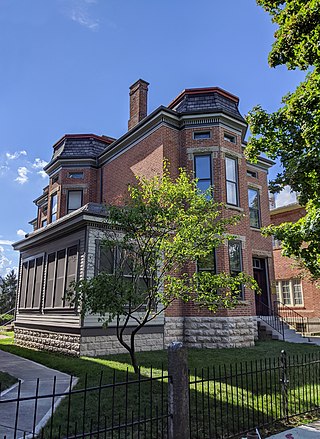
The Columbus Landmarks Foundation, known as Columbus Landmarks, is a nonprofit historic preservation organization in Columbus, Ohio. The foundation is best-known for its list of endangered sites in the city and its annual design award, given to buildings, landscapes, and other sites created or renovated in Columbus. It was established in 1977 as a project of the Junior League of Columbus, Ohio, following the demolition of the city's historic Union Station. It is headquartered at 57 Jefferson Avenue, a contributing structure in the Jefferson Avenue Historic District in Downtown Columbus.


























